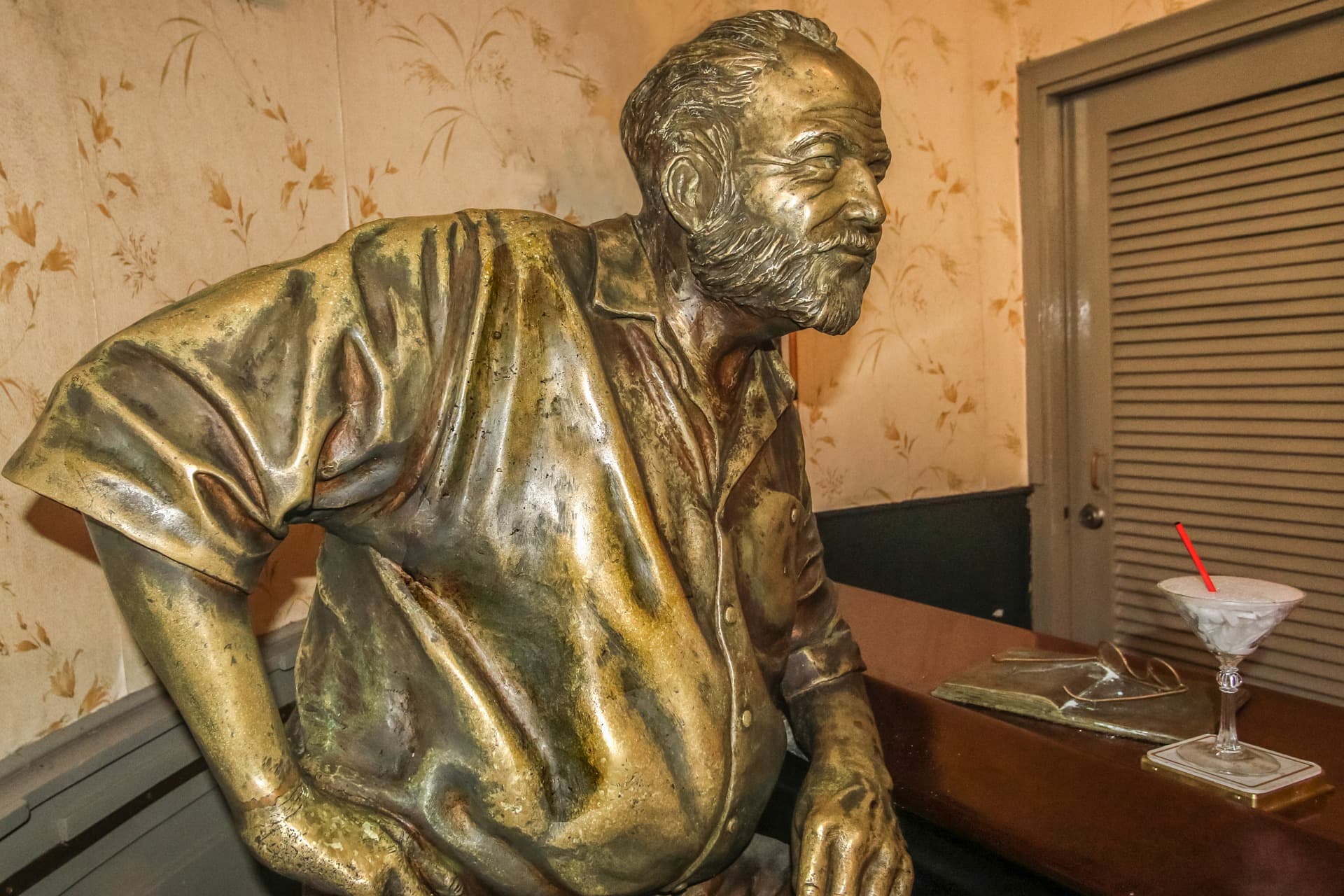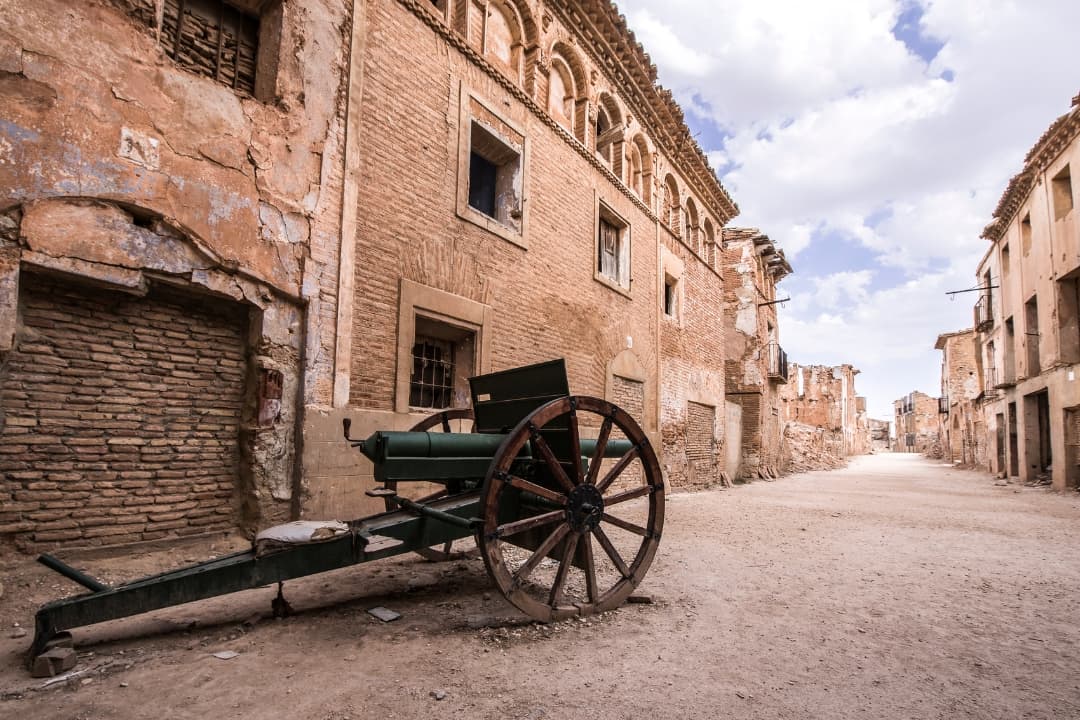Old Man at the Bridge
Old Man At The Bridge is a short story written by American author Ernest Miller Hemingway. All you need to know and learn about this chapter is given below.

Share Options
Summary of the Poem
The short story ‘Old Man At The Bridge’ by Earnest Hemingway opens up about the tragedies of war on ordinary people.
An old man with a steel-rimmed spectacle was sitting by the bridge with dusty clothes. The people were moving to the trucks from the boat with all their essentials as the war had hit their small villages.
The mule drone carriages were finding it difficult to climb up the steep bank from the bridge. The soldiers were helping them push the carts forward. But the old man sat there without moving. He was too tired to go forward.
The story is narrated from the point of view of a soldier. He was in charge of exploring the bridgehead beyond and finding out where the enemies have advanced by crossing the bridge to check at regular intervals.
On his way back he went near the old man and enquired about his native. The soldier got to know that the man was from ‘San Carlos’. The soldier could see the pleasure in his eyes as he said his village's name.
That was his native town and so it gave him pleasure to mention it and he smiled.
The man soon found comfort in the soldier and started to narrate his story. The old man had many animals in his village that he took care of. Soon the reader gets to understand that the old man was the last person to leave the war-hit village as it was heartbreaking for him to leave behind his beloved animals.
Hearing this the soldier gets a closer look at the old man's attire and figures out that he was not a shepherd or a herdsman. So he went on to ask the old man about his animals. The old man goes on to say that he looked after a variety of animals and now he had to leave all of them behind.
The narrator took his time to watch the bridge and the African-looking country of Ebro Delta and wondered how long it might take for the enemies to get here. Even then the old man did not move a bit.
The soldier then came to the old man and repeated the question,
What animals were they?
The old man replied that he owned two goats, a cat and four pairs of pigeons. He had to leave all his animals due to the artillery.
Then the narrator enquires about the old man's family. He then realised that the old man had no one except for those innocent animals.
The only family the old man had was his set of animals. The old man goes on to speak about how the cat might be taking care of itself while others might not be able to do the same.
The cat of course will be alright. A cat can look out for itself, but I cannot think what will become of the others.
The narrator goes on to ask about his political inclination. The old man replied stating that he did not have any politics.
He said,
I am 76 years old. I have come 12 km now and I think now I can go no further.
Hearing this the narrator, who was also a soldier, asked him not to stay back near the bridge as it was not safe enough. He asked the old man to climb up to the trucks which would take him to Tortosa.
The old man wanted to know where he could land if he got on to any of the trucks. The soldier informed him that the trucks are moving towards Barcelona.
The old man was not happy to hear this as he knew nobody in that direction. However, he thanks the soldier for the information.
The narrator could see the agony and tiredness in the old man's eyes. The old man had no one to complain to about his situation. So the old man goes on to talk about his animals to the soldier.
The cat will be alright I am sure. There is no need to be unquiet about the cat. But the others. Now what about the others?
The narrator could feel the agony and sorrow of his animals in those words. To console him reassured the old man that all his animals would be fine. But the constant fear of their future worried and sickened the old man.
But what will they do under the artillery when I was told to leave because of the artillery?
The old man worried about how the animals would act and live through the war while he had to leave due to the same war.
This line speaks immensely about the destruction a war can cause to ordinary people. The old man was living his old age with his beloved animals. But now he is forced to move in a direction which is unknown and leave behind his only possession on earth.

The soldier enquired whether the old man left the dove cage open. The old man replies yes. He was sure that they could fly and be safe. The soldier encourages the man to get up and walk towards the truck. As he gets up to walk, he continues to say the same lines to himself,
I was taking care of animals..... I was only taking care of animals.
It was an Easter Sunday and the Fascists were moving towards Ebro. The soldier soon realised that the fact that the cat could take care of himself was the only good luck that the old man would ever have for himself.
Like the old man, the soldier was also aware of the destructive force that would fall on these innocent animals.
Through the short story, the author is trying to shed light on the Spanish Civil War and the catastrophe it brought to the ordinary public. A lot of life, livelihood property and animals were lost during this war.
No war can bring peace but only a land filled with dead bodies and sorrow. Here the old man is a replica of what a generation of people struck by war would go through. The utter confusion, the feeling of being lost and not aware of what was about to come dropped everyone into a negative mental space.
About the Author
- Ernest Miller Hemingway is an American author.
- Born: 21 July 1899
- Died: 2 July 1961
- Place of Birth: Illinois, USA.
- Major Works: ‘The Old Man and the Sea’, and ‘A Farewell To Arms’
- Best Known For: Ernest Hemingway is known for his concise and direct writing style that emphasises simple language and unadorned sentences.
Share Options
A Deeper Look At The Story
Let us look at the themes and go beyond the text.
Spanish Civil War
The Spanish Civil War was a conflict that took place from 1936 to 1939 in Spain. It was fought between the Republican troops, which were made up of numerous left-wing organisations, and the Nationalist forces, which were commanded by General Francisco Franco.
A military coup against Spain's democratically elected government, supported by the fascist governments of Italy and Germany, started the war. Both sides of the conflict committed heinous atrocities during it, such as mass killings and the bombing of residential areas. Following their victory, the Nationalists imposed a dictatorship that lasted until the death of Franco in 1975.
War and Life
The destructive repercussions of war on ordinary individuals are depicted in Ernest Hemingway's short story "Old Man at the Bridge". The protagonist of the story, an old man, was compelled to leave his house because of the war in the Spanish Civil War. He's starving, worn out, and concerned about the animals he left behind.
The old man's tale is just one of numerous like stories of people who have been uprooted by conflict and are now left with nothing but their anxieties and uncertainties. The short story by Ernest Hemingway shows how war disrupts civilians' normal lives and leaves them with emotional and physical scars that may never fully heal.
Compassion
Compassion is a significant theme in Ernest Hemingway's short story "Old Man at the Bridge." The story portrays the devastating effects of war on ordinary people, particularly the elderly man who is forced to flee his home due to the conflict in the Spanish Civil War. Through the conversation between the old man and the soldier, the reader can see how the soldier shows compassion towards the old man.
The reader may see how the soldier demonstrates sympathy for the old man through their dialogue. The soldier expresses concern for the old man's wellbeing and offers to deliver his belongings. Hemingway presents the soldier's acts as an example of how important it is to have compassion for others, especially those who are suffering as a result of events beyond their control. The necessity for human connection is highlighted by the soldier's compassion for the elderly guy.
Get Personalized Tuitions
We offer premium education on a personalized level. Online tuition for all grades, tailor-made!

Old Man at the Bridge Questions and Answers
Below are a few questions that you can look out for your examinations and class tests. Stand out with perfectly written answers with help of Aneetta Class.
The setting of Old Man at the Bridge is crucial in emphasising the terrible effects of war on common people. The story takes place in a little town close to a bridge during the Spanish Civil War. The story's main character, an elderly man, is compelled to flee his home because of the artillery, and he is currently traversing the countryside with his animals. The setting of the bridge symbolizes a crossroads, and the old man's situation represents the difficult choices faced by ordinary people caught in the crossfire of war. The barren and desolate landscape surrounding the bridge reflects the impact of war on the countryside, and the old man's despair underscores the devastating emotional toll of war.
Hemingway's use of dialogue is essential to the themes of Old Man at the Bridge The conversation between the old man and the soldier serves as a vehicle for the exploration of the human cost of war. The old man's dialogues reveal his anxiety and uncertainty, and the soldier's kindness and empathy towards him highlight the value of interpersonal relationships in difficult situations. The direct and brief vocabulary of Hemingway emphasises the emotional distance between the protagonists, and the tragedy of war and its effects on common people are highlighted by the conversation's simplicity.
The old man's situation reflects the difficult choices faced by people caught in the middle of a conflict. Despite his fear and exhaustion, the old man chooses to stay at the bridge with his animals. The significance of this decision lies in its representation of the resilience of ordinary people in the face of adversity. By choosing to stay at the bridge, the old man displays his determination to hold on to what little he has left and his refusal to let the war defeat him. This choice also highlights the sadness of war and its effects on the innocent civilians left behind.